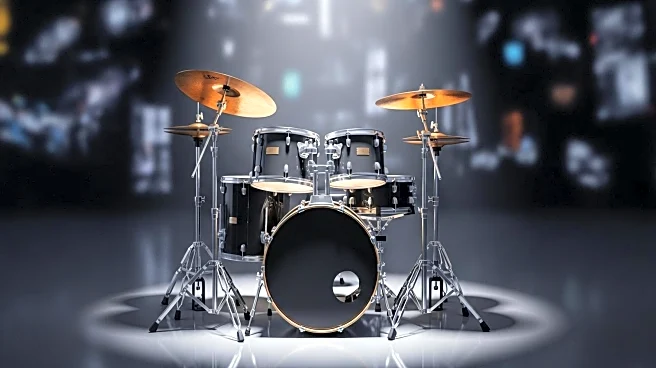What's Happening?
Out-of-home (OOH) advertising is experiencing significant transformation, becoming one of the most dynamic and data-driven spaces in media. Traditionally known for brand fame and big ideas, OOH now incorporates precision, context, and connection, leveraging new technologies and methodologies. This evolution has introduced a plethora of new terminologies and acronyms, challenging even seasoned marketers. The modern outdoor ecosystem now includes concepts such as advertised impressions, audience targeting, and attribution modeling, which connect OOH exposure to consumer actions like store visits and app downloads. The guide provided by the source aims to help marketers navigate these changes, offering insights into the fundamentals of format and measurement, as well as the new frontiers of automation and attribution.
Why It's Important?
The shift towards data-driven OOH advertising is crucial for marketers seeking to enhance precision and effectiveness in their campaigns. By utilizing audience targeting and attribution modeling, advertisers can better understand and prove the business impact of their campaigns. This transformation allows for more personalized and contextually relevant advertising, which can lead to higher engagement and conversion rates. As OOH becomes more integrated with digital strategies, marketers can leverage these insights to optimize their media spend and achieve greater reach and frequency. The evolution of OOH advertising reflects broader trends in the industry towards automation and real-time data utilization, which are essential for maintaining competitiveness in a rapidly changing media landscape.
What's Next?
As OOH advertising continues to evolve, marketers can expect further integration of digital technologies and data analytics into their strategies. The adoption of programmatic buying and real-time targeting will likely increase, offering more flexibility and efficiency in campaign management. Additionally, advancements in beacon technology and location intelligence will enable even more precise audience targeting and measurement. Marketers will need to stay informed about these developments and adapt their strategies accordingly to maximize the impact of their OOH campaigns. Collaboration with technology providers and media owners will be key to accessing the latest tools and platforms that support these innovations.
Beyond the Headlines
The transformation of OOH advertising raises important considerations regarding privacy and data usage. As marketers increasingly rely on mobility data and audience targeting, they must ensure compliance with privacy regulations and ethical standards. The balance between personalization and privacy will be a critical factor in the success of future OOH campaigns. Additionally, the shift towards digital and data-driven strategies may impact traditional media owners, requiring them to adapt their offerings to remain competitive. The ongoing evolution of OOH advertising reflects broader changes in the media industry, highlighting the need for continuous innovation and adaptation.











